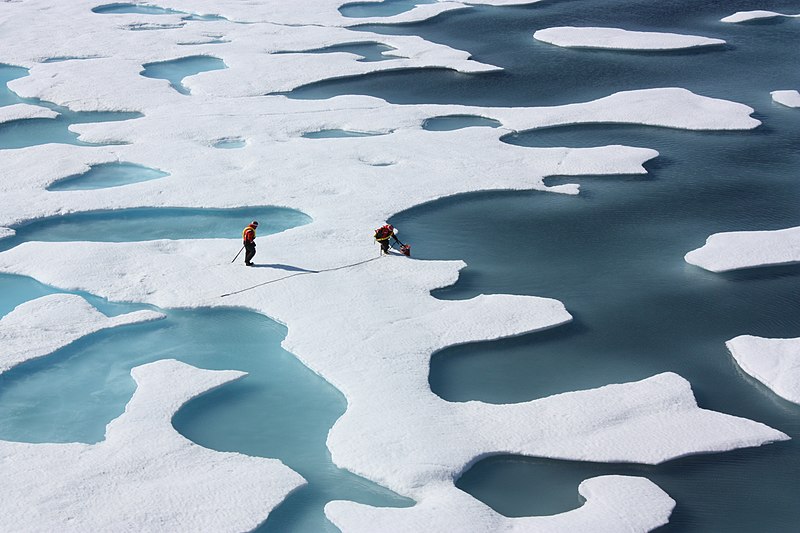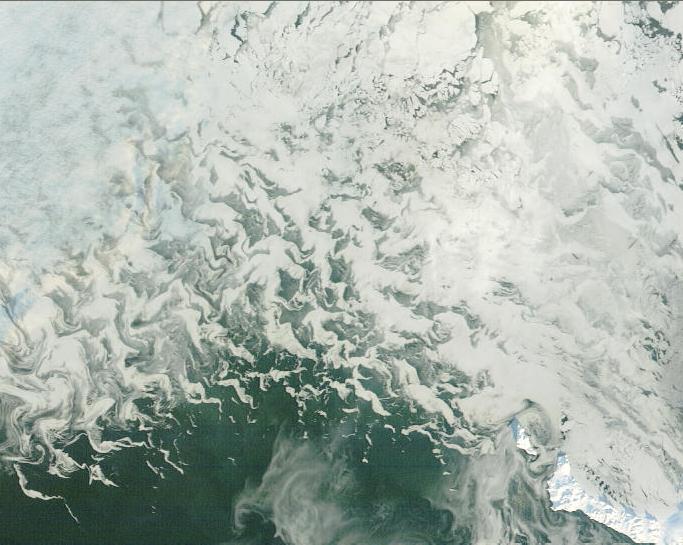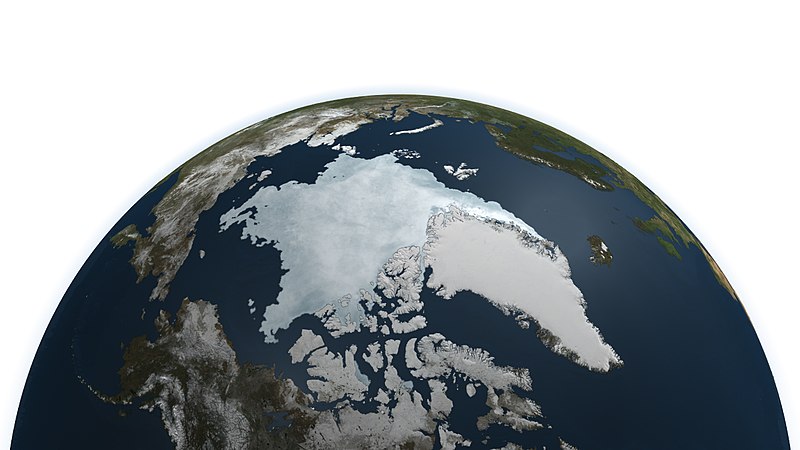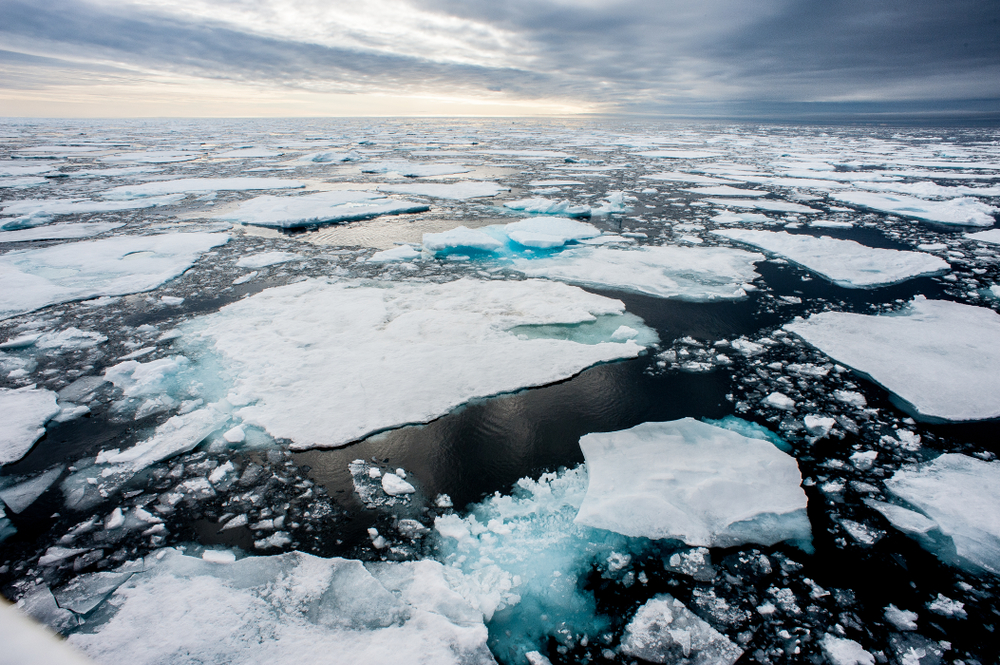Table of Contents (click to expand)
Sea ice is made of freshwater because during the process of freezing, the salt is left behind; the ice remains freshwater, while the water underneath is rich in salt.
About two-thirds of the Earth’s permanent ice cover floats over polar waters as a thin layer of sea ice. Sea ice is frozen ocean water that floats on the ocean’s surface. It occurs across the Arctic and Antarctic Oceans. Despite its vastness, sea ice accounts for roughly 1/1,000 of the overall volume of ice on Earth.
While snow and glacial ice arise from precipitation, sea ice originates from the crystallization of surface water, and does not fall as precipitation.
However, the most fascinating part about sea ice is that despite being made from salty seawater, it is almost as pure as freshwater.

Hence, the production of sea ice is among the fundamental processes on Earth that regulate the salinity of the ocean. When there is more sea ice, during periods of global coolness, the ocean becomes saltier.
When there is less ice during warm summers, freshwater gets added to the ocean, which decreases its salinity.
How Does Sea Ice Form?
Ocean water freezes at lower temperatures than fresh water. Due to the presence of salt within it, salt water freezes at around 28.4 degrees Fahrenheit, whereas freshwater freezes at roughly 32 degrees Fahrenheit.
However, since just the water element of saltwater freezes, the ice contains relatively little salt. It may be melted and used directly as drinking water.
But why is sea ice absent of almost all salt?
The answer lies in the simple chemistry of the bonds between the molecules of water and salt. The presence of salt disturbs the formation of ice crystals. The salt prefers to be combined with water, but water does not.
Thus, the formation of pure ice would now require an additional job—moving the salt out of the way and then building the crystal ice structure. As a result, more “coldness” is required to drive the salt away from the system so that crystals can form.
What this means is that removing salt from water requires an extra step, which is inevitably going to consume more energy.

Once the ocean surface has reached the freezing point of saltwater, any further cooling leads to the formation of ice. The very first ice to develop is called ‘frazil ice’, composed of minute crystal particles and spikes up to three or four millimeters in diameter. When additional ice crystals develop, a soupy mixture forms at the ocean’s surface.
After a continuous sheet of ice forms, the cold environment is no longer directly connected to the saltwater, and sea-ice growth continues by accumulating at the sea-ice bottom. Throughout an annual cycle in the Arctic, around 45 centimeters of ice melts away from the ice surface, while an equivalent amount is replenished at the base. As a consequence, an ice crystal deposited in the sea ice at the base will travel up the ice column at an average velocity of roughly 45 cm/yr until it reaches the surface and melts.
Also Read: How Does The Arctic Ocean Freeze During Winters?
Sea Ice And Ocean Circulation
The salinity of seawater also has an impact on ocean currents. As sea ice develops, much of the salt in the ocean is forced into the water beneath the ice. The water below sea ice contains more salt and turns denser than the neighboring ocean water, so it descends and drifts away from the surface. As a result, sea ice helps the global ocean conveyor belt’s circulation.

Also Read: Would Oceans Become Less Salty If All The Polar Ice Caps Melted?
Sea Ice And Global Climate
While sea ice is mostly found in polar regions, it has a significant impact on global climate. The shiny surface of sea ice bounces a lot of sunlight back into space and out into the atmosphere. Since this solar energy “swings back,” rather than being absorbed by the water, the temperature near the poles stays much cooler in comparison to the equator.

When sea ice melts, due to increasing temperatures, fewer white surfaces remain to reflect the sunlight. The surface absorbs more solar energy, and thus water temperatures rise. This starts a heating and melting cycle. Increasing water temperatures cause ice to build later in the winter and melt faster the following summer.
Even slight temperature rises can lead to considerable heating over time, making the polar region the most sensitive to climate change on the planet.
How well do you understand the article above!

References (click to expand)
- Campbell, K. J., & Orange, A. S. (1974, January). A continuous profile of sea ice and freshwater ice thickness by impulse radar. Polar Record. Cambridge University Press (CUP).
- Rhoden, A. R., Rudolph, M. L., & Manga, M. (2023, March). The challenges of driving Charon's cryovolcanism from a freezing ocean. Icarus. Elsevier BV.
- Skinner B. J.,& Murck B. W. (2010). The Blue Planet: An Introduction to Earth System Science, 3rd Edition: An Introduction to Earth System Science. Wiley Global Education
